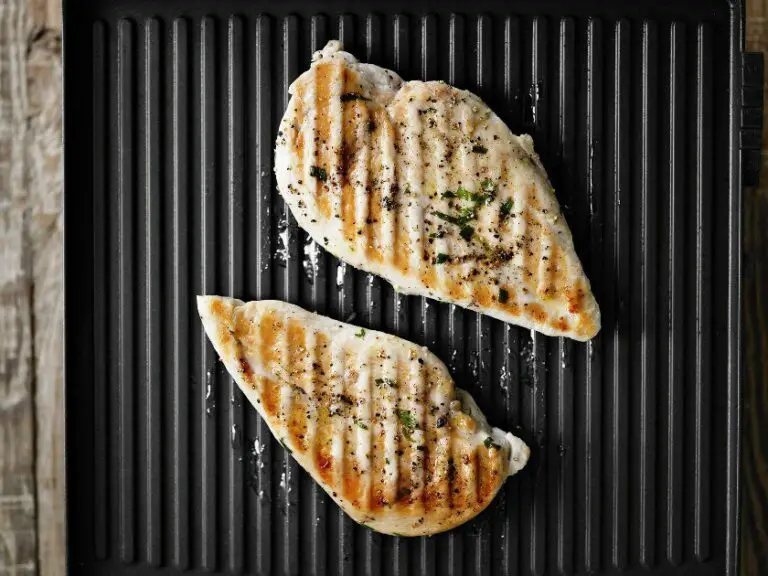George Foreman grills are known for their convenience and ability to quickly cook delicious meals. But what about their electricity usage? Let’s take a closer look at the energy consumption of these popular grills.
Key Takeaways:
- George Foreman grills are designed to be energy efficient.
- The average power consumption ranges from 750 to 1,500 watts.
- Factors such as grill size and cooking time can affect electricity usage.
- The grill’s energy-saving features contribute to lower power consumption.
- By following energy-saving tips, you can further optimize the efficiency of your George Foreman grill.
Understanding the Energy Efficiency of George Foreman Grills
When it comes to energy efficiency, George Foreman grills are designed with power consumption in mind. These grills utilize several innovative features that contribute to their electricity-saving capabilities.
One key factor in the energy efficiency of George Foreman grills is their strategically placed electric heating elements. These elements ensure even heat distribution, minimizing energy wastage during the cooking process.
Another energy-saving feature is the floating hinge design of the grills. This design allows the top plate to adjust to the thickness of the food being cooked. As a result, the cooking time is reduced, leading to lower power consumption.
The non-stick cooking surface of George Foreman grills further promotes energy efficiency. It requires less heat to achieve the desired cooking results, allowing for more efficient and economical electricity usage.
Table: Features Contributing to the Energy Efficiency of George Foreman Grills
| Feature | Description |
|---|---|
| Strategically placed electric heating elements | Ensures even heat distribution, minimizing energy wastage |
| Floating hinge design | Adjusts to the thickness of the food being cooked, reducing cooking time and power consumption |
| Non-stick cooking surface | Requires less heat for desired cooking results, leading to energy savings |
Overall, the combination of these energy-efficient features makes George Foreman grills a viable and electricity-saving option compared to other cooking appliances. By choosing a George Foreman grill, you can enjoy delicious meals while minimizing your power consumption.
Factors Affecting Electricity Usage of George Foreman Grills
While George Foreman grills are generally energy efficient, the electricity usage can still vary depending on several factors. One such factor is the cooking duration. The longer the grill is in use, the more electricity it will consume. It’s recommended to preheat the grill before cooking to avoid unnecessary energy consumption.
Another factor is the temperature settings. Higher temperature settings will require more electricity to maintain the desired level of heat. It’s important to adjust the temperature settings based on the type of food being cooked to optimize energy usage.
Lastly, the size of the grill also impacts electricity consumption. Larger grills tend to require more power to operate compared to smaller models. When considering a George Foreman grill, it’s important to choose a size that suits your cooking needs while keeping in mind the potential impact on electricity usage.
Factors Affecting Electricity Usage of George Foreman Grills:
| Factors | Impact on Electricity Usage |
|---|---|
| Cooking Duration | The longer the grill is in use, the more electricity it will consume. |
| Temperature Settings | Higher temperature settings require more electricity to maintain the desired level of heat. |
| Grill Size | Larger grills tend to require more power to operate compared to smaller models. |
By considering these factors and making conscious decisions regarding cooking duration, temperature settings, and grill size, you can manage and optimize the electricity usage of your George Foreman grill.
Tips to Minimize Electricity Usage with George Foreman Grills
If you’re looking to make your George Foreman grill more energy-efficient and reduce your electricity usage, we have some valuable tips for you. By implementing these power-saving techniques, you can enjoy efficient cooking while not compromising on the delicious results.
Tip 1: Keep Your Grill Clean
A clean grill not only ensures healthier cooking but also helps optimize energy usage. Regularly clean the grill plates and remove any food residue to maintain optimal heat distribution. When the grill is clean, it operates more efficiently, requiring less power to cook your favorite meals.
Tip 2: Use Temperature Settings Wisely
Take advantage of the adjustable temperature settings on your George Foreman grill. Begin by preheating the grill at a higher temperature, then reduce it to the appropriate level for cooking. Avoid constantly adjusting the temperature during the cooking process to prevent unnecessary energy consumption. By using the temperature settings wisely, you can achieve efficient and precise cooking results while conserving power.
Tip 3: Cook Multiple Items at Once
Maximize the capacity of your George Foreman grill by cooking multiple items simultaneously. By utilizing the grill’s surface area efficiently, you can avoid the need for multiple cooking sessions, saving both time and electricity. Whether you’re grilling vegetables, meat, or sandwiches, try to plan your meals to make the most out of each cooking session.
Tip 4: Optimize Cooking Time
Reducing the cooking duration is another way to minimize electricity usage with your George Foreman grill. Preheat the grill before placing the food on it to ensure it reaches the desired temperature quickly. Additionally, avoid excessively long cooking times by keeping an eye on the food and removing it once it’s cooked to perfection. By optimizing the cooking time, you can save energy without compromising on the taste and texture of your meals.
| Tips to Minimize Electricity Usage with George Foreman Grills |
|---|
| Keep Your Grill Clean |
| Use Temperature Settings Wisely |
| Cook Multiple Items at Once |
| Optimize Cooking Time |
Conclusion
In conclusion, when it comes to energy-efficient cooking, George Foreman grills are a reliable option. These grills are designed with features that promote efficient power consumption, making them a cost-effective choice for your kitchen. Compared to traditional cooking appliances, George Foreman grills offer a power consumption advantage that can help reduce your electricity costs.
With their strategic placement of electric heating elements, floating hinge design, and non-stick cooking surface, George Foreman grills prioritize energy efficiency. By evenly distributing heat and adjusting to the thickness of the food, these grills minimize cooking time and ultimately reduce power consumption. The non-stick surface further aids in achieving desired cooking results while requiring less heat.
While the electricity usage of George Foreman grills can vary depending on factors such as cooking duration, temperature settings, and grill size, there are ways to optimize energy usage. Preheating the grill before cooking, adjusting temperature settings based on the food being cooked, and utilizing the grill’s capacity to cook multiple items simultaneously can all contribute to minimizing power consumption.
In summary, by understanding the energy efficiency of George Foreman grills, considering the factors that affect electricity usage, and implementing energy-saving tips, you can enjoy efficient and convenient cooking while keeping your energy consumption in check. Embrace the power of energy-efficient cooking with your George Foreman grill and experience the benefits of reduced power consumption.
FAQ
Do George Foreman grills use a lot of electricity?
No, George Foreman grills are designed to be energy efficient and consume electricity at a relatively low rate compared to other cooking appliances.
How much power does a George Foreman grill consume?
The average power consumption for a George Foreman grill ranges from 750 to 1,500 watts, which translates to 0.75 to 1.5 kilowatts per hour.
What factors affect the electricity usage of a George Foreman grill?
The cooking duration, temperature settings, and size of the grill can impact the electricity consumption of a George Foreman grill.
How can I minimize electricity usage with my George Foreman grill?
To minimize electricity usage, ensure the grill is clean and well-maintained, use the adjustable temperature settings wisely, and cook multiple items at once to maximize capacity.
Are George Foreman grills energy efficient compared to other cooking appliances?
Yes, George Foreman grills are designed with energy efficiency in mind and can help save on electricity costs compared to traditional cooking appliances.



